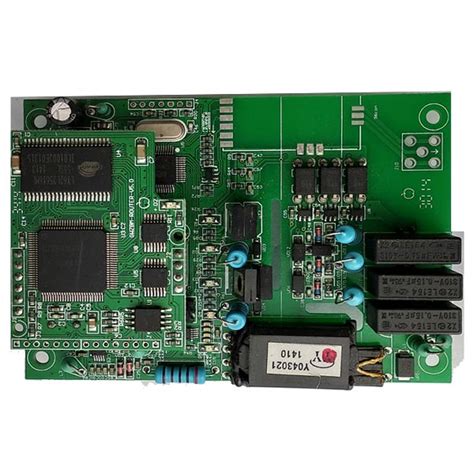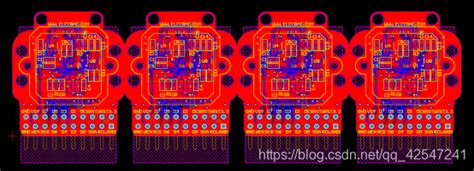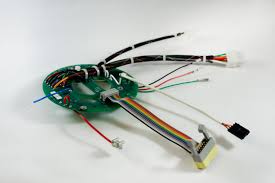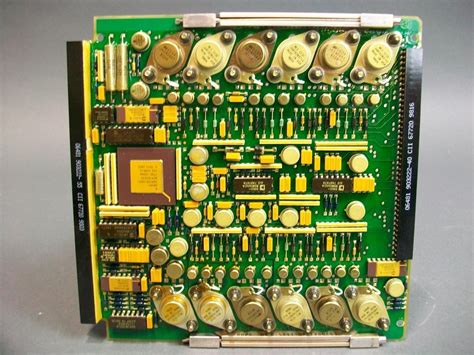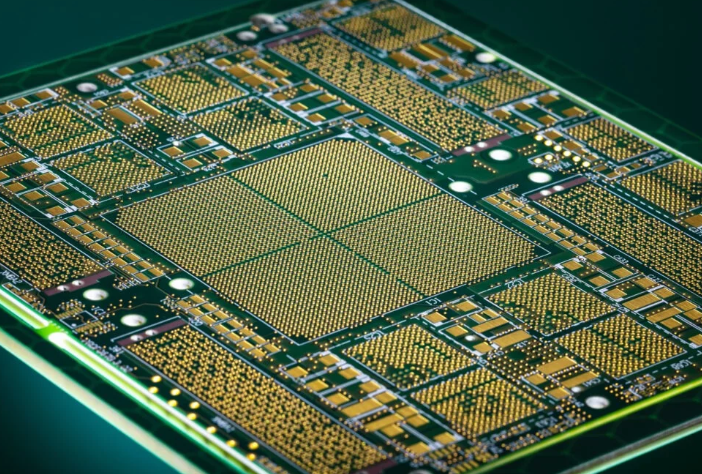Revolutionizing Electronics: The Future of Automated PCB Manufacturing
Key Takeaways
In exploring the realm of automated PCB manufacturing, it is essential to recognize the significant advantages that come with implementing these cutting-edge solutions. The pcb assembly process has greatly benefited from automation, improving not only the accuracy but also the overall efficiency of production lines. With advanced technologies such as robotics and artificial intelligence, companies can streamline pcba operations, enabling quicker turnaround times while maintaining high standards of quality. The integration of automation not only facilitates better precision but also opens avenues for enhanced scalability in production, allowing manufacturers to adapt swiftly to fluctuating market demands. Furthermore, as industries push for cost-effective solutions in an increasingly competitive landscape, the adoption of automated systems proves to be a pivotal strategy for achieving cost reduction. Overall, the future of automated PCB manufacturing is not just a trend but a transformative endeavor that promises to redefine how electronic devices are produced and assembled.
Introduction to Automated PCB Manufacturing
The realm of automated PCB manufacturing is undergoing a significant transformation, driven by advances in technology and the growing demand for enhanced production methods. PCB assembly, commonly referred to as PCBA, has become a pivotal area where automation plays a critical role. As industries aim for quicker turnaround times and superior quality in their electronic products, the incorporation of automation streamlines processes traditionally bogged down by manual labor. Key components such as pick-and-place machines, automated testing systems, and sophisticated software for design validation allow manufacturers to not only increase their efficiency but also ensure greater precision in each assembly stage. Furthermore, these automated systems contribute to enhanced quality control, reducing the margin for error associated with human involvement. The ability of manufacturers to adapt their processes through automation results in substantial cost efficiencies, enabling them to allocate resources more effectively while responding agilely to market demands. As we delve further into the exciting developments enveloping automated PCB manufacturing, it becomes clear that this evolution is crucial in redefining how electronic devices are produced and ultimately enriching the tech landscape.
Key Technologies Driving Automation in PCB Production
The integration of automation into PCB assembly represents a significant leap forward in the electronics manufacturing landscape. Key technologies leading this revolution include robotics, machine learning, and advanced imaging systems. Robotics play a crucial role by executing repetitive tasks with high precision, reducing the likelihood of human error and increasing overall production speed. Machine learning, on the other hand, enhances the ability of automated systems to optimize production processes by analyzing data patterns and predicting potential issues before they arise.
Moreover, advanced imaging systems equipped with high-resolution cameras provide real-time feedback during the PCBA process, allowing for immediate corrections and ensuring that quality standards are upheld. This synergy of technologies helps streamline workflows while maintaining consistent quality throughout production cycles.
In addition to these technologies, software solutions for process management are becoming increasingly sophisticated. For instance, programs that enable real-time monitoring and control of all stages of PCB production can significantly reduce downtime and enhance operational efficiency.
“The future of electronics manufacturing lies in the seamless integration of technology into every aspect of production,” emphasizes industry expert Jane Doe.
With these advancements, companies can not only meet increasing market demands but also reduce labor costs associated with manual assembly lines. Overall, the shift towards automated systems is essential in shaping a more efficient PCB assembly process that aligns with the fast-paced needs of modern electronics.
| Technology | Benefits |
|---|---|
| Robotics | High precision and increased production speed |
| Machine Learning | Predictive maintenance and data-driven decisions |
| Advanced Imaging Systems | Real-time feedback and quality assurance |
| Process Management Software | Reduced downtime and enhanced efficiency |
These technologies collectively ensure that automated PCB manufacturing remains at the forefront of innovation, allowing manufacturers to produce high-quality products at lower costs while scaling operations effectively.
Benefits of Automation: Efficiency, Precision, and Quality
The integration of automation in pcb assembly processes has significantly elevated the benchmarks for efficiency, precision, and overall quality in electronics manufacturing. Automated systems utilize advanced technologies such as robotics and artificial intelligence to optimize every phase of pcba production, ensuring that tasks are carried out with remarkable accuracy and consistency. This shift from manual to automated processes reduces the likelihood of human error while dramatically increasing production speed, which is critical in today’s fast-paced market. Additionally, by implementing automation, manufacturers can achieve tighter tolerances and more intricate designs with ease, leading to enhanced product performance. The focus on quality assurance is also reinforced through automated inspection systems that meticulously evaluate every component for defects before final assembly. As a result, companies can deliver reliable electronic devices that meet or exceed industry standards while minimizing waste and maximizing output. This commitment to excellence ultimately positions automated pcb manufacturing as a key driver in the evolution of modern electronics.
Cost Reduction Strategies through Automated Systems
Automated systems in PCB assembly have become a game-changer for manufacturers striving to cut costs while maintaining high performance. By integrating advanced robotics and automation technologies, companies can streamline the PCBA processes. These systems minimize manual labor requirements, reducing the risk of human error and increasing overall throughput. One prominent strategy involves the use of automated soldering techniques, which not only enhance precision but also significantly decrease material waste. Moreover, implementing smart supply chain management software leads to optimized inventory levels, further contributing to cost efficiency.
Additionally, automating the inspection processes for PCB assembly allows for earlier detection of defects, thus reducing rework expenses and improving product reliability. This shift toward automation not only lowers operational costs but also leads to faster product turnover as firms respond more agilely to market demands. As production scales up, automated systems facilitate increased output without a corresponding rise in labor costs, enabling businesses to achieve substantial economies of scale. Thus, the integration of automation into PCBA is not just about cost reduction; it is about fostering a more resilient manufacturing environment that is equipped to adapt and thrive in an ever-evolving electronics landscape.
Scalability in Automated PCB Manufacturing Processes
The scalability of automated PCB manufacturing processes plays a pivotal role in the evolution of the electronics industry. As demand for printed circuit boards (PCBs) continues to rise with the proliferation of smart devices and IoT applications, the capability to scale production efficiently is paramount. Automated systems facilitate pcb assembly in a way that allows manufacturers to adjust production volumes rapidly, without compromising on quality or precision. This scalability is particularly beneficial for high-mix, low-volume (HMLV) production environments where different configurations are frequently required.
The integration of advanced automation technologies enables manufacturers to streamline their pcba processes while also maintaining consistency across various product lines. From automated optical inspection (AOI) to intelligent material handling systems, these technologies reduce the risk of human error and enhance overall system reliability. Furthermore, automation allows for more flexible manufacturing setups, meaning that as market demands shift, companies can swiftly adapt their operations—scaling up or down as needed.
Notably, scalability also translates to significant cost efficiencies. With the ability to optimize resources and reduce lead times through automation, businesses can achieve greater output without the need for extensive capital investment in additional labor or infrastructure. This advantage fosters a more competitive landscape where companies can innovate continuously while staying responsive to consumer needs. As such, scalable automated PCB manufacturing is not just a trend but a vital strategy shaping the future of electronics production.
Future Trends in Electronics and Automated Manufacturing
As the landscape of electronics evolves, the integration of automated PCB manufacturing into production processes is anticipated to reshape future trends dramatically. With the increasing complexity of electronic devices, there is a growing demand for more sophisticated pcb assembly methodologies that can ensure higher precision and efficiency. Innovations in machine learning and artificial intelligence are expected to further refine these processes, allowing for real-time quality control and defect detection within pcb assembly lines. Moreover, with the acceleration of digital transformation, manufacturers are likely to adopt IoT (Internet of Things) solutions that can monitor and optimize performance across various stages of pcba production. This interconnectedness will not only lead to more responsive manufacturing capabilities but also support predictive maintenance, thereby reducing downtime significantly. Furthermore, the rise in consumer electronics with shorter product life cycles necessitates adaptable manufacturing systems capable of scaling operations seamlessly. This adaptability will be vital as companies seek to remain competitive in a landscape where speed-to-market is essential. Overall, the future of electronics and automated manufacturing points toward a more interconnected, efficient, and high-quality production environment that emphasizes precision through advanced technologies in automated PCB manufacturing.
Case Studies: Successful Implementation of Automated PCB Systems
In recent years, the adoption of automated PCB manufacturing has gained significant momentum across various industries, with numerous case studies showcasing its success. For instance, one leading electronics manufacturer implemented advanced robotic systems for their PCB assembly processes, which resulted in a remarkable 30% increase in production efficiency. This transformation was achieved through the integration of smart inspection technology, ensuring that every PCBA met stringent quality control standards. Another case highlighted a company specializing in consumer electronics that adopted automation alongside meticulous data analytics, leading to a 15% reduction in operational costs. By continuously monitoring and optimizing their production lines, they achieved unparalleled levels of consistency and accuracy in their pcba operations. Furthermore, a medical device manufacturer reported significant gains in scalability after switching to automated systems. This shift enabled them to respond swiftly to market demands while maintaining high-quality outputs. These examples illustrate not only the tangible benefits of automation in PCB production, such as improved lead times and reduced waste, but also underscore how strategic implementation can set companies apart in the highly competitive electronics landscape. As we continue exploring these advancements, it becomes clear that automated systems are not merely a trend but a fundamental shift that promises lasting impact on PCB assembly methodologies.
Conclusion: The Impact of Automation on the Electronics Industry
The introduction of automated PCB manufacturing has fundamentally changed the landscape of the electronics industry. With the rise of pcb assembly processes, companies are embracing automation as a means to enhance productivity and maintain competitive advantage. As the demand for high-quality pcba components increases, manufacturers can no longer rely solely on manual assembly methods. Automation not only improves accuracy but also significantly reduces production times, allowing businesses to meet shorter delivery deadlines effortlessly. Moreover, the integration of advanced robotics and AI in manufacturing processes has made it possible to achieve meticulous levels of precision that are difficult to accomplish through traditional means. This improved efficiency directly translates into cost savings, as businesses reduce waste and optimize resource allocation. Furthermore, as technologies evolve, the scalability of automated systems opens new possibilities for customization in electronics production. As these advancements continue to unfold, it is evident that automated PCB manufacturing will play a pivotal role in shaping the future direction of electronic device development and production methodologies within this dynamic sector.
Conclusion: The Impact of Automation on the Electronics Industry
The integration of automation into pcb assembly processes marks a significant shift in the electronics industry, particularly in the manufacturing of printed circuit boards (PCBs). As demand grows for more complex designs and faster production times, automated PCB manufacturing systems provide a vital solution for meeting these needs. By leveraging advanced technologies, such as robotics and artificial intelligence, manufacturers can achieve unparalleled levels of efficiency, precision, and quality in their pcba processes. The elimination of manual labor not only reduces the likelihood of errors but also facilitates consistent product output that aligns with industry standards. Moreover, automation fosters cost reduction strategies by minimizing waste and optimizing resource allocation, making it feasible for businesses to scale operations without sacrificing quality. This transformative approach to pcb assembly is not merely a trend; it is essential for future innovation in electronic device production. Overall, as the landscape continues to evolve with new advancements, automated systems will play a crucial role in shaping the future dynamics of electronics manufacturing and enhancing competitiveness on a global scale.
FAQs
As industries increasingly embrace automated PCB manufacturing, many questions arise regarding its impact and practical implications. A common inquiry relates to the distinction between PCB assembly and PCBA. While PCB assembly refers specifically to the process of placing electronic components onto a printed circuit board, PCBA encompasses the complete process from the initial board fabrication to the final assembly, including soldering and testing of components. Another frequent question highlights how automation enhances quality control during pcb assembly. Automated systems can meticulously monitor every stage of production, significantly reducing human error and increasing consistency. Additionally, potential users often wonder about the initial investment required for automation. While the upfront costs can be substantial, companies typically witness a return on investment through improved efficiency and reduced production times over the long term. This alignment between cost and quality suggests that embracing automation is not just beneficial but necessary for maintaining competitiveness in today’s fast-paced electronics market.


